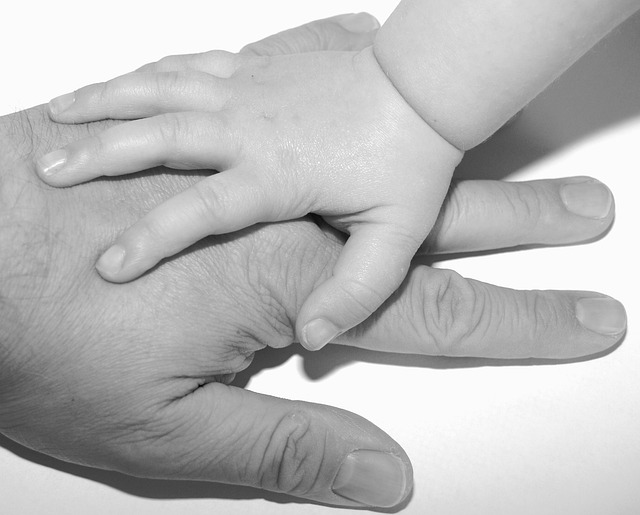Co-parenting requires parents to strategically engage and fulfill their roles within a dual-household structure, prioritizing their child’s stability and well-being over personal differences. Effective communication is essential for managing a child’s routine, education, health, and emotional needs without conflict. Consistency in boundaries, rules, and parenting strategies across both homes is crucial for the child’s security and overall development. Parents should commit to comprehensive parenting plans and focus on resolving disagreements constructively to maintain a harmonious co-parenting relationship. The aim is to preserve family integrity and prioritize the child’s best interests, ensuring that co-parenting leads to a healthy and functional parent-child dynamic. After separation, parents must adapt to a collaborative approach, aligning on major decisions, routines, and the children’s well-being through clear communication channels like shared calendars and regular meetings. Open dialogue, mutual respect, and consistent routines are key to creating a stable and loving environment for the children, facilitating their smooth transition into co-parenting. This cooperative strategy demands effort and commitment but is critical for the long-term adjustment and happiness of the child, making it a priority for responsible parenting. Seeking family law advice can help parents navigate legal complexities, ensuring their rights and responsibilities are upheld while fostering a positive co-parenting experience.
Navigating the complexities of co-parenting can be a challenging journey for any family. This article serves as a comprehensive guide for parents seeking to master the art of co-parenting amidst separation or divorce. We’ll explore essential strategies that foster effective teamwork between co-parents, delve into communication techniques that keep families connected, and discuss the pivotal role of consistency in child-rearing across two households. Furthermore, we’ll address managing conflict and change to build resilience within co-parenting dynamics. By leveraging joint parenting plans and embracing the cohesive family unit approach, parents can maintain positive relationships with their children. This article aims to provide actionable advice for families looking to thrive together through co-parenting.
- Navigating the Nuances of Co-Parenting: Strategies for Effective Teamwork Between Parents
- Establishing a Unified Front: Communication Techniques for Parents Post-Separation
- The Role of Consistency in Child-Rearing Across Two Households
- Managing Conflict and Change: Building Resilience in Co-Parenting Dynamics
Navigating the Nuances of Co-Parenting: Strategies for Effective Teamwork Between Parents

Co-parenting presents unique challenges that require a deep understanding of one’s role within the family structure. Parents must navigate the complexities of maintaining a cohesive parenting approach across two households. Effective communication is paramount; it enables parents to share information about their child’s routine, education, health, and emotional well-being without conflict. Establishing clear boundaries and consistent rules in both homes fosters stability for the child, ensuring they receive similar guidance and support from each parent. By prioritizing the child’s needs above personal differences, parents can work together harmoniously, creating a nurturing environment that supports the child’s development.
To maintain harmony in co-parenting, it is essential for parents to approach their partnership with a collaborative mindset. This involves regular dialogue to discuss schedules, decisions, and any concerns that may arise. Parenting plans should be detailed, covering all aspects of care, and both parents should commit to adhering to these plans. When disagreements occur, focusing on solutions rather than the dispute itself can help maintain a constructive dynamic. By prioritizing the family unit’s integrity and the child’s best interests, parents can navigate co-parenting effectively, ensuring their relationship as parents remains healthy and beneficial for all involved.
Establishing a Unified Front: Communication Techniques for Parents Post-Separation

Navigating the transition from a united family unit to co-parenting can be a complex process for any parent post-separation. Effective communication is paramount in this new dynamic, as it lays the foundation for a unified parenting approach despite residing in separate households. Establishing clear and consistent communication channels helps ensure that both parents are aligned on major decisions, routines, and their children’s well-being. Utilizing tools such as shared calendars, parenting apps, and regular meetings can facilitate this process, fostering a collaborative environment where each parent’s input is valued. By prioritizing open dialogue and mutual respect, parents can create a stable and loving environment for their children, transcending the changes in their own relationship.
In the realm of co-parenting, consistency becomes a guiding principle that helps children navigate this significant life change with ease. Parents must work together to establish routines and discipline strategies that are adhered to in both homes. This unity is not about sameness but about ensuring that the child’s experiences are as consistent as possible between households. By setting clear boundaries and expectations, parents can minimize confusion and conflict for their children, focusing on what’s best for the family unit as a whole. Embracing this collaborative approach requires effort and commitment from both parties, but the benefits of a well-adjusted child are invaluable.
The Role of Consistency in Child-Rearing Across Two Households

When navigating the complexities of co-parenting, consistency in child-rearing emerges as a cornerstone for maintaining stability and security in a child’s life. Parents who share custody must collaborate closely to ensure that their parenting approaches align across both households. This unity in routine, discipline, and values fosters an environment where children can thrive regardless of their location. Establishing clear guidelines for bedtimes, meal times, and disciplinary measures aids the child in understanding what to expect, which is crucial for their emotional well-being. Communication between the parents plays a pivotal role in this process; regular check-ins and a shared family calendar can help keep both households on the same page, reducing the risk of confusing or conflicting messages for the child. By prioritizing consistency in parenting strategies, families can create a harmonious co-parenting dynamic that puts the best interests of the child at the forefront.
Managing Conflict and Change: Building Resilience in Co-Parenting Dynamics
When navigating co-parenting dynamics, managing conflict and embracing change are pivotal for fostering a healthy family environment. Parents must approach each interaction with a mindset focused on the child’s well-being, rather than their differences. Establishing clear communication channels and boundaries can help mitigate conflicts by setting expectations and reducing misunderstandings. It is essential for both parents to prioritize open dialogue, using conflict resolution skills when disagreements arise. This not only aids in maintaining a peaceful coexistence but also teaches children effective problem-solving strategies.
Change, an inevitable aspect of life, can be particularly challenging in co-parenting arrangements. However, by building resilience within the family system, parents can transform these challenges into opportunities for growth and strengthened bonds. Resilience is cultivated through consistent routines, shared values, and a commitment to adapting together as a family. Parents should also consider seeking professional guidance when necessary, to navigate significant life events or transitions smoothly. This proactive approach to managing conflict and change reinforces the family’s ability to adapt and maintain a supportive environment for their children.
Navigating co-parenting challenges can be a complex journey for any family. This article has outlined essential strategies and communication techniques that empower parents to work together effectively despite their separation. Emphasizing consistency in parenting and resilience in managing conflicts, the guidance provided aims to foster a stable and loving environment for children. By understanding the nuances of co-parenting and implementing these practices, parents can ensure that their primary focus remains on the well-being and growth of their child within each family unit. Ultimately, the goal is to create a harmonious, collaborative parenting approach that benefits the entire family.
